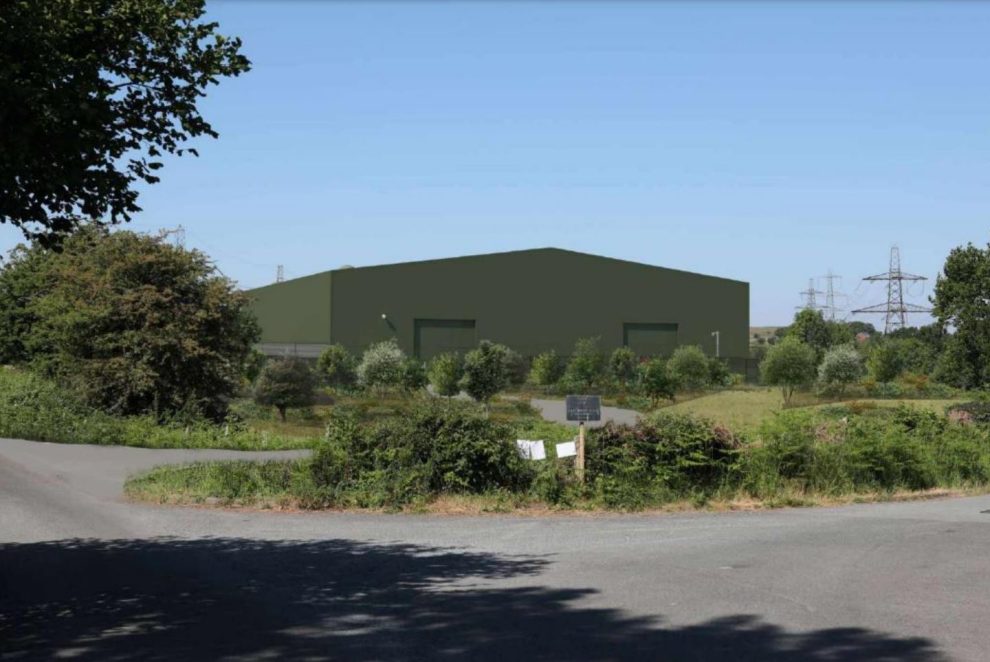A POWER company has won planning permission to build a 13-metre structure for specialist equipment near an “idyllic” rural village near Nelson, despite residents’ concerns it would “blight” their homes.
They argued the installation of equipment designed to stabilise the power grid would lead to increased noise, light pollution and traffic.
Llanfabon residents “already have one of the largest transmission substations in Wales” near their village, more than 170 of them argued in their petition to Caerphilly Council.
But the planning committee approved the plans on Wednesday (December 13), with several members claiming the need to stabilise the grid for the region was greater than the concerns of the villagers.
Case officer Anthony Pyne told the committee the planned structure was outside of the council’s defined settlement boundary, and would “have the appearance of an agricultural building”.
He judged there would be “no unacceptable impacts” on local residents if the equipment – a synchronous condenser – was installed.
But resident Kim Allen said villagers “fear” unacceptable noise levels from the site and claimed the condenser “could be built elsewhere”.
Nelson councillor Brenda Miles was also opposed to the plans, telling the committee the “eyesore” structure would be built on a “prominent and elevated” site.
Cem Kosaner, an agent from Lichfields representing the applicant WP Grid Services, rejected allegations the site would “produce power” – and said recent moves towards renewable energy in the UK meant synchronous condensers were essential to grid stability.
The proposal was “entirely in accordance” with national and local planning guidelines, he added.
Several committee members agreed with the need to stabilise the grid.
Nigel Dix said approving the plan was a “no brainer”.
“I share the concerns of the local community but we have to look at the bigger picture,” he added.
Fellow councillor Mike Adams said reaching climate-change targets was “what it’s all about” and “it’s the world we should be thinking of”.
Committee member Shane Williams said he had been “reassured” by an officer’s site visit to check noise levels, but did question whether the ground levels for the proposed new structure could be “lowered” to reduce the visual impact on villagers.
A majority of committee members approved the plans, prompting a shout of “shame on you” from one of the Llanfabon villagers in the public gallery.
After the meeting, another villager, Marcus Baillie, said residents of the “idyllic” village had been offered “very little way of input” into the planning process.
Villagers would see the committee’s decision as “another slap in the face” after they had already “lost out” when opposing a nearby wind farm.
Mr Bailie told the Local Democracy Reporting Service (LDRS) he was “unconvinced by the visual representations” shown to the committee, in particular the “security lighting which in all probability will light up like a Christmas tree”.
Fellow resident Bob Brewer said he was also unhappy “with the level of discussion provided” and said the plans had been approved “with what seems to be little notice of residents’ concerns”.
“We need assurances as a community that the rural character of our homes won’t be degraded further by this development,” Mr Brewer said, adding: “Planning for the greater good should not obscure the wellbeing and environment of the few.”
Responding to those residents’ comments, Mr Kosaner of Lichfields told the LDRS the draft proposals had been “advertised widely” and residents had been offered “ample opportunity… to engage in the design evolution and the determination process”.
Mr Kosaner said the synchronous condenser would “not generate any discernible noise over and above the existing background noise levels”, adding that he expected any security lighting at the site to be “linked to motion sensors, meaning that it would only be used infrequently”.
“The socio-economic benefits of the proposal including security of supply, substantial cost savings to the UK bill payers, and facilitating the transition to renewable energy sources as a material consideration were quite rightly afforded significant weight” in the committee’s decision, he added.



















